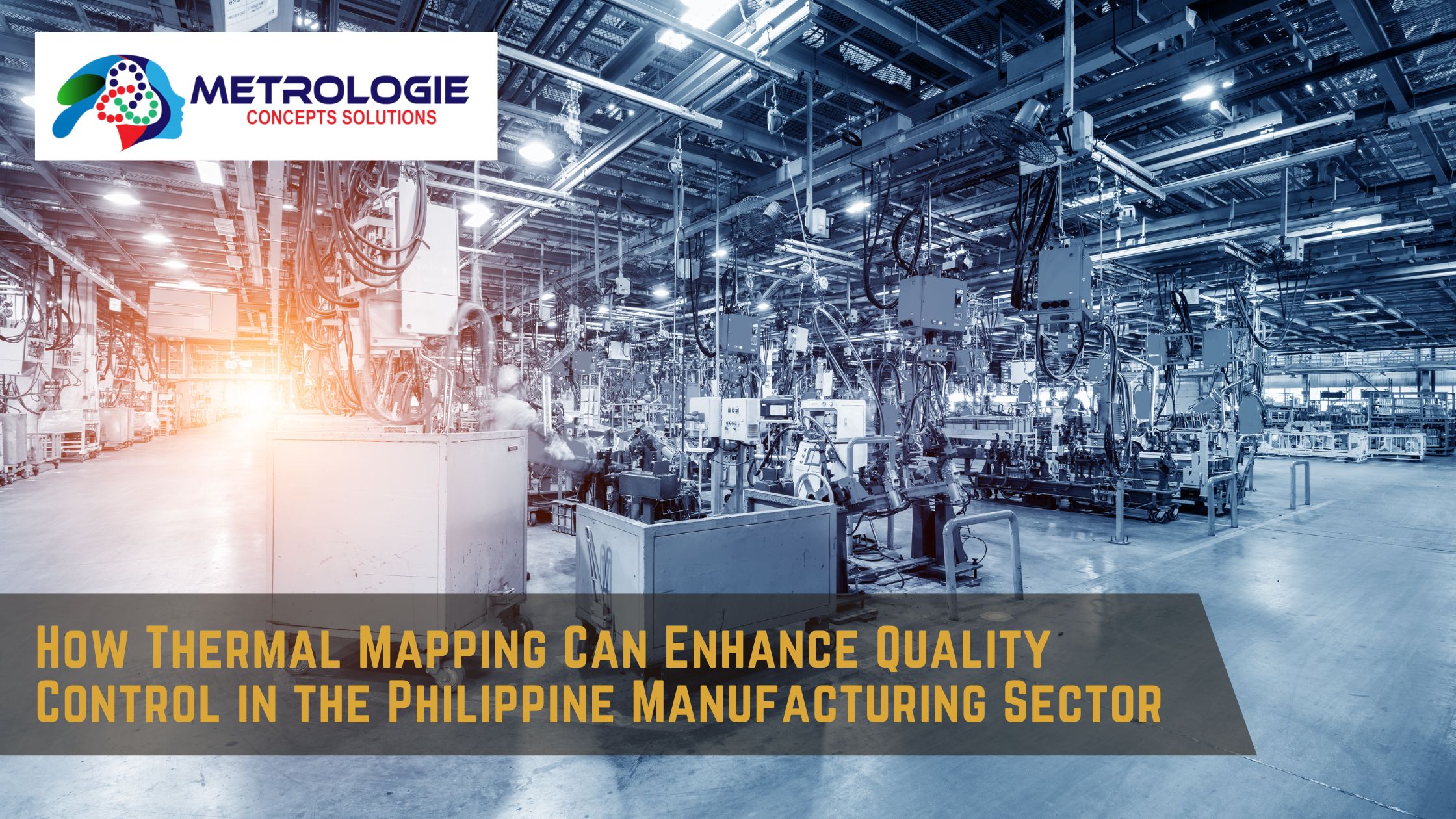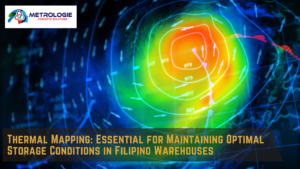Introduction
Quality control is a cornerstone of successful manufacturing. It ensures that products meet certain standards, maintaining the integrity and reputation of a brand. In the Philippine manufacturing sector, this is particularly crucial as the industry competes on both local and global stages. Enter thermal mapping—a cutting-edge technique that has revolutionized quality control. But what exactly is thermal mapping, and how can it enhance quality control in manufacturing? Let’s dive in.
Understanding Thermal Mapping
Definition of Thermal Mapping
Thermal mapping involves creating a visual representation of temperature distribution across a surface or space. This technique is pivotal in identifying temperature variations that might not be apparent through conventional methods.
How Thermal Mapping Works
Thermal mapping uses infrared cameras and sensors to detect heat emitted by objects. These devices capture thermal images, which are then analyzed to identify hot and cold spots. The data collected is compiled into a thermal map, providing a comprehensive overview of temperature distribution.
Types of Thermal Mapping Techniques
- Infrared Thermography: Uses infrared cameras to capture temperature data.
- Contact Thermography: Involves placing sensors directly on the surface being measured.
- Aerial Thermal Mapping: Uses drones equipped with thermal cameras to map large areas.
The Role of Thermal Mapping in Quality Control
Identifying Temperature Variations
Temperature variations can indicate underlying issues in the manufacturing process. Thermal mapping helps in pinpointing these variations, allowing for timely interventions.
Ensuring Product Consistency
Consistency is key in manufacturing. By monitoring temperature, thermal mapping ensures that each product is produced under optimal conditions, maintaining high quality across batches.
Detecting Defects Early
Early detection of defects can save significant costs. Thermal mapping identifies anomalies that could indicate defects, allowing for prompt corrective actions before the products reach the market.
Applications of Thermal Mapping in the Philippine Manufacturing Sector
Electronics Manufacturing
In electronics manufacturing, precise temperature control is critical. Thermal mapping helps in monitoring soldering processes and identifying overheating components, ensuring the reliability of electronic devices.
Food and Beverage Industry
Temperature control is vital in the food and beverage industry to ensure product safety and quality. Thermal mapping is used in monitoring storage facilities and production lines to prevent spoilage and contamination.
Pharmaceuticals
The pharmaceutical industry relies on strict temperature regulations. Thermal mapping ensures that drugs are produced and stored under appropriate conditions, safeguarding their efficacy and safety.
Automotive Industry
In the automotive industry, thermal mapping is used to monitor engine components and manufacturing processes, ensuring that vehicles meet safety and performance standards.
Benefits of Implementing Thermal Mapping
Improved Product Quality
By identifying and rectifying temperature-related issues, thermal mapping enhances the overall quality of products, leading to higher customer satisfaction.
Increased Operational Efficiency
Thermal mapping provides real-time data, enabling swift decision-making and reducing downtime. This leads to more efficient manufacturing processes.
Cost Savings
Early detection of defects and optimization of processes result in significant cost savings. Thermal mapping helps in minimizing waste and reducing rework.
Enhanced Compliance with Regulations
Adhering to industry standards and regulations is easier with thermal mapping. It provides the necessary data to ensure compliance with temperature-related guidelines.
Challenges in Thermal Mapping Implementation
Technical Challenges
Implementing thermal mapping requires sophisticated equipment and software. Ensuring accuracy and reliability of the data can be challenging.
Cost Considerations
The initial investment in thermal mapping technology can be high. However, the long-term benefits often outweigh the costs.
Training and Expertise
Proper training is essential to effectively use thermal mapping tools and interpret the data. Investing in skilled personnel is crucial for successful implementation.
Introduction
Quality control is a cornerstone of successful manufacturing. It ensures that products meet certain standards, maintaining the integrity and reputation of a brand. In the Philippine manufacturing sector, this is particularly crucial as the industry competes on both local and global stages. Enter thermal mapping—a cutting-edge technique that has revolutionized quality control. But what exactly is thermal mapping, and how can it enhance quality control in manufacturing? Let’s dive in.
Understanding Thermal Mapping
Definition of Thermal Mapping
Thermal mapping involves creating a visual representation of temperature distribution across a surface or space. This technique is pivotal in identifying temperature variations that might not be apparent through conventional methods.
How Thermal Mapping Works
Thermal mapping uses infrared cameras and sensors to detect heat emitted by objects. These devices capture thermal images, which are then analyzed to identify hot and cold spots. The data collected is compiled into a thermal map, providing a comprehensive overview of temperature distribution.
Types of Thermal Mapping Techniques
- Infrared Thermography: Uses infrared cameras to capture temperature data.
- Contact Thermography: Involves placing sensors directly on the surface being measured.
- Aerial Thermal Mapping: Uses drones equipped with thermal cameras to map large areas.
The Role of Thermal Mapping in Quality Control
Identifying Temperature Variations
Temperature variations can indicate underlying issues in the manufacturing process. Thermal mapping helps in pinpointing these variations, allowing for timely interventions.
Ensuring Product Consistency
Consistency is key in manufacturing. By monitoring temperature, thermal mapping ensures that each product is produced under optimal conditions, maintaining high quality across batches.
Detecting Defects Early
Early detection of defects can save significant costs. Thermal mapping identifies anomalies that could indicate defects, allowing for prompt corrective actions before the products reach the market.
Applications of Thermal Mapping in the Philippine Manufacturing Sector
Electronics Manufacturing
In electronics manufacturing, precise temperature control is critical. Thermal mapping helps in monitoring soldering processes and identifying overheating components, ensuring the reliability of electronic devices.
Food and Beverage Industry
Temperature control is vital in the food and beverage industry to ensure product safety and quality. Thermal mapping is used in monitoring storage facilities and production lines to prevent spoilage and contamination.
Pharmaceuticals
The pharmaceutical industry relies on strict temperature regulations. Thermal mapping ensures that drugs are produced and stored under appropriate conditions, safeguarding their efficacy and safety.
Automotive Industry
In the automotive industry, thermal mapping is used to monitor engine components and manufacturing processes, ensuring that vehicles meet safety and performance standards.
Benefits of Implementing Thermal Mapping
Improved Product Quality
By identifying and rectifying temperature-related issues, thermal mapping enhances the overall quality of products, leading to higher customer satisfaction.
Increased Operational Efficiency
Thermal mapping provides real-time data, enabling swift decision-making and reducing downtime. This leads to more efficient manufacturing processes.
Cost Savings
Early detection of defects and optimization of processes result in significant cost savings. Thermal mapping helps in minimizing waste and reducing rework.
Enhanced Compliance with Regulations
Adhering to industry standards and regulations is easier with thermal mapping. It provides the necessary data to ensure compliance with temperature-related guidelines.
Challenges in Thermal Mapping Implementation
Technical Challenges
Implementing thermal mapping requires sophisticated equipment and software. Ensuring accuracy and reliability of the data can be challenging.
Cost Considerations
The initial investment in thermal mapping technology can be high. However, the long-term benefits often outweigh the costs.
Training and Expertise
Proper training is essential to effectively use thermal mapping tools and interpret the data. Investing in skilled personnel is crucial for successful implementation.
Case Studies
Success Stories from Philippine Manufacturers
Several Philippine manufacturers have successfully implemented thermal mapping, leading to improved product quality and operational efficiency. For instance, an electronics manufacturer reported a 20% reduction in defective products after integrating thermal mapping into their quality control process.
Lessons Learned from Thermal Mapping Implementation
One key lesson is the importance of thorough training and regular maintenance of thermal mapping equipment. Additionally, manufacturers have found that integrating thermal mapping with other quality control measures yields the best results.
Future Trends in Thermal Mapping
Advances in Thermal Imaging Technology
As technology advances, thermal imaging equipment is becoming more affordable and accurate, making it accessible to a broader range of manufacturers.
Integration with IoT and AI
The integration of thermal mapping with IoT and AI allows for real-time monitoring and predictive analysis, further enhancing quality control measures.
Predictive Maintenance
Thermal mapping is increasingly being used for predictive maintenance, identifying potential equipment failures before they occur, thus preventing costly downtimes.
Conclusion
Thermal mapping is a powerful tool that can significantly enhance quality control in the Philippine manufacturing sector. By providing detailed insights into temperature variations, it helps in maintaining product consistency, detecting defects early, and improving overall operational efficiency. As technology continues to evolve, the role of thermal mapping in quality control is set to become even more pivotal, driving the industry towards higher standards and greater competitiveness.
FAQs
What is thermal mapping?
Thermal mapping is a technique that creates a visual representation of temperature distribution across a surface or space, using infrared cameras and sensors to detect and analyze heat patterns.
How does thermal mapping improve quality control?
Thermal mapping improves quality control by identifying temperature variations, ensuring product consistency, and detecting defects early, allowing for timely interventions and corrective actions.
What industries benefit the most from thermal mapping?
Industries such as electronics manufacturing, food and beverage, pharmaceuticals, and automotive benefit significantly from thermal mapping due to their stringent temperature control requirements.
What are the costs associated with thermal mapping?
The costs of thermal mapping include the initial investment in equipment and software, as well as ongoing expenses for maintenance and training. However, the long-term benefits often outweigh these costs.
How can companies start implementing thermal mapping?
Companies can start implementing thermal mapping by investing in the necessary equipment, training personnel, and integrating thermal mapping with their existing quality control processes. Consulting with experts and conducting pilot tests can also help ensure successful implementation.




